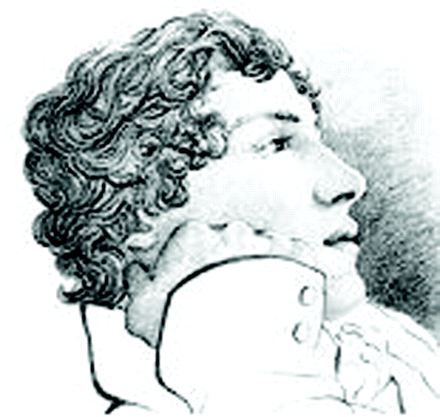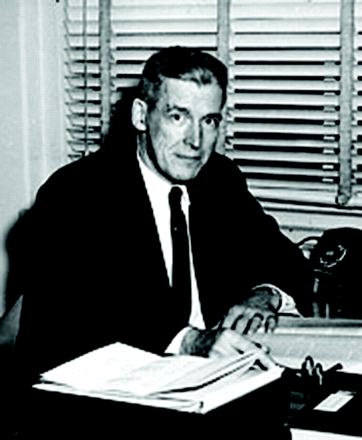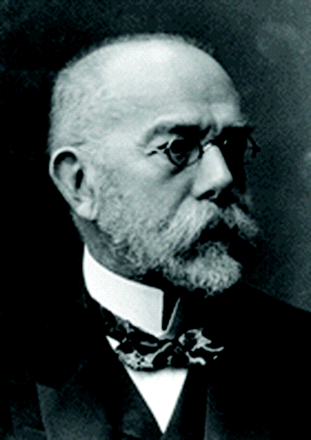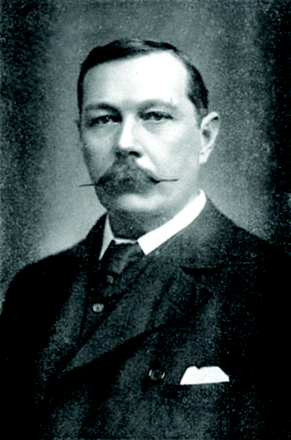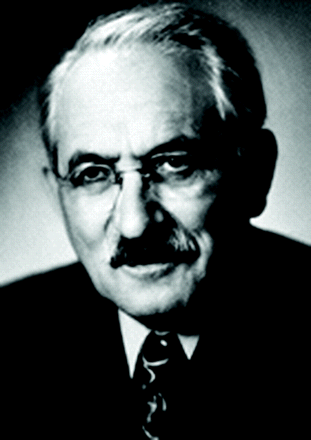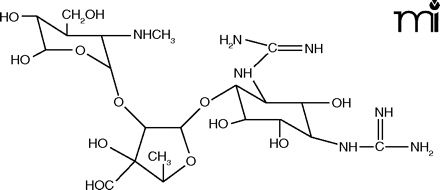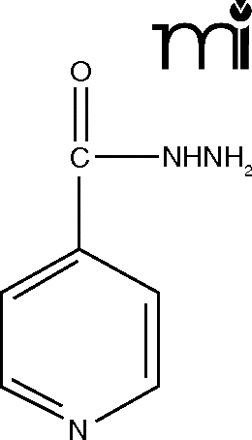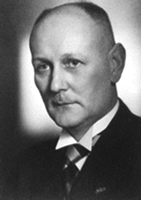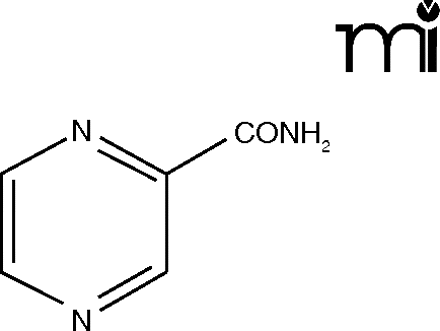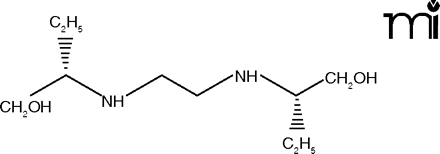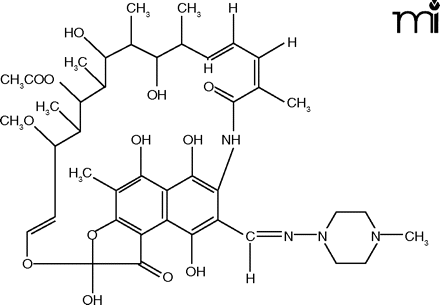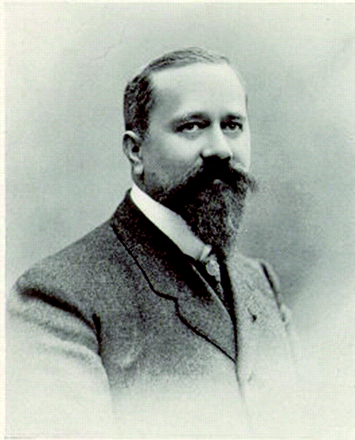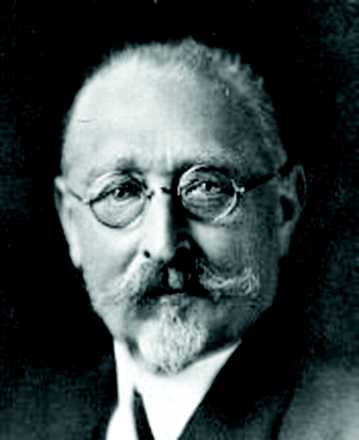The Fight Against Tuberculosis
Throughout history, mankind has endured infectious plagues, the mere mention of which could elicit feelings of terror. Examples include the Black Death in the 14th and 17th Centuries, smallpox, which killed, scarred, and blinded untold millions, and the influenza pandemic of 1918–1919. The collective memory of the latter may be what makes the current threat of a possible avian flue pandemic especially terrifying.
Tuberculosis (TB) rarely has caused such fulminant worldwide outbreaks , although it has been a scourge provoking fear for as long as mankind has documented its history. Outbreaks of TB in recent history have been successfully kept under control, owing, in large part, to effective drugs and methods of patient sequestration. Unfortunately, TB—like a forgotten diva mustering her stage presence once again—is currently a resurgent plague.

Starting in the 1940s, development of a series of effective anti-tubercular drugs had made the disease curable for the first time in history. More recently, however, certain developments have again made TB a significant problem in the United States. Factors that have abetted the rise of TB include the arrival of immigrants from countries with a high TB prevalence, the emergence of HIV/AIDS (in which TB is an opportunistic infection), and the increasing incidence of multidrug-resistant TB. Worldwide, the situation is much worse. The World Health Organization (WHO) had estimated that during 2005 about nine million people would develop active TB and about two million would die of it (1).
As an ancient and continuing scourge of the human race, TB has had a notable impact in Western culture. In everyday usage, the disease has been called “consumption” and the “white plague,” stemming from its visible effects on the patient. These terms are also reflected in Ode to a Nightingale by John Keats, who himself died of TB at the age of twenty-six, in which he calls our world a place “where youth grows pale, and spectre-thin, and dies.”
TB is an important presence in 19th Century works such as Alexandre Dumas (fils)’s The Lady of the Camellias, which Verdi adapted for La Traviata, an opera in which the courtesan Violetta succumbs to TB. Thomas Mann’s novel The Magic Mountain is set in a sanatorium in the Swiss Alps. Although basically a novel of ideas, Mann’s work conveys a great deal of information about the disease—its symptoms, clinical course, and the then prevailing modes of treatment including the pneumothorax procedure.
Before the advent of effective drug therapy, as described below, the main approach to treatment was to house the patient in a sanatorium. In the United States, the pioneer of the sanatorium was Edward Livingston Trudeau (1848–1915), a New York physician who contracted the disease at the age of twenty-five. He established the Adirondack Cottage Sanatorium at Saranac Lake, New York. It later became famous as the Trudeau Sanatorium but closed in 1954 because effective medicines had become available. Sanatorium treatment was based on fresh mountain air, rich and plentiful food, exercise, and rest, with the patient isolated from his or her usual environment.
TB spreads readily in the inner city among people living in crowded conditions, deprived of adequate housing, ventilation, sunlight and food. It has been quipped that TB occurs because of four causes: poverty, poverty, POVERTY, and the tubercle bacillus—yet, not only the huddled masses are afflicted; the well-to-do also suffer. Medical students and physicians, perhaps because of their exposure to contagious diseases, are also well represented. Trudeau and John Keats have been mentioned. Rene Laennec (1781–1826), inventor of the stethoscope, fought a long but losing battle with TB (2). A 20th Century example is Jonathan Rhoads, a prominent Philadelphia surgeon and surgical nutritionist, and scion of a patrician family. Rhoads came down with moderately advanced TB in 1945. He became an early recipient of streptomycin, but had to discontinue it because its ototoxicity affected his equilibrium. He completed his recovery with four months of hospitalization and three months at Presbyterian Sanatorium in Albuquerque, New Mexico (3). Rhoads had a most favorable outcome, resuming his career and living actively to age ninety-four.
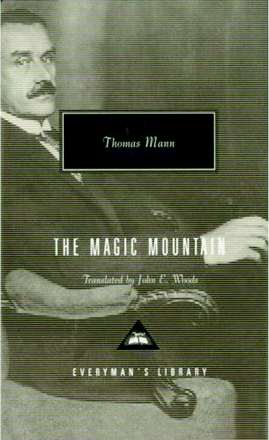
Robert Koch and the Mycobacterium
The bacterial cause of TB is Mycobacterium tuberculosis, a bacillus that is hard to kill, hard to culture, and hard to stain. Once stained, however, it holds the dye tenaciously, even when washed with acid-alcohol, allowing for its categorization as an acid-fast bacterium. It was Robert Koch who developed a staining procedure and a solid culture medium for M. tuberculosis and fulfilled all three of his own postulates (Box 1) proving that this organism was the cause of TB.
Koch’s Postulates
The series of conditions that must be met in order to establish a microorganism as the causative agent of a disease, namely:
-
it must be present in all cases of the disease;
-
inoculations of its pure cultures must produce the disease in susceptible animals; and
-
from these it must again be isolated and propagated in pure cultures.
The American Heritage® Stedman’s Medical Dictionary, 2nd Edition Copyright © 2004 by Houghton Mifflin Company. Published by Houghton Mifflin Company. All rights reserved.
Koch was defeated, however, in his efforts to find a cure. Some human interest aspects of his failure were recently recalled in connection with the centennial of Koch’s receipt of the 1905 Nobel prize.
Koch prepared a glycerol extract from a pure culture of tubercle bacilli and conducted extensive studies of its effects in animals, healthy people, and TB patients. He reported that this extract would enable us to diagnose questionable cases of early consumption even when we fail to detect bacilli. He, thus, foreshadowed the tuberculin diagnostic test. But he also believed that the extract would cure TB, and rushed into a multi-center clinical trial in Berlin mobilizing more than 1,700 patients: a trial that showed the extract had a negligible effect on the disease (4).
Enter Arthur Conan Doyle, the creator of Sherlock Holmes, for a fascinating sidelight to this story. In 1890, as a struggling young general practitioner, Doyle read about Koch’s extract, which was being hyped—to the extent made possible by telegraph and telephone—much like the human genome project a century later. In November, 1890 Doyle read in the British Medical Journal that later that week Dr. Koch was to demonstrate his TB remedy in Berlin. Doyle decided that he must witness that demonstration! He caught a train to London where he got himself assigned to cover the event for a magazine, took the boat across the Channel, and the Continental Express to Berlin.
There he ran into the proverbial brick wall. Admission to the demonstration, scheduled for the next morning, was by “entry coupon” only. Doyle tried to see Koch at his home, to slip by the ticket taker, even to accost Dr. von Bergmann (Koch’s colleague who actually administered the extract) all to no avail; he never saw the demonstration. Luckily, however, Doyle was helped by an American TB specialist, Dr. Henry J. Hartz of Detroit, who shared his notes with Doyle that afternoon. The following morning, Hartz escorted Doyle into the clinical wards, where he was able to examine patients who had received Koch’s “lymph” and look over their records. From what he saw Doyle concluded that Koch’s lymph could be “an admirable aid to diagnosis” but was worthless as a remedy. Doyle, at that time a young nobody, published his negative evaluation in the London Daily Telegraph on November 20, 1890 (5). Remarkably, Doyle proved to be right. Koch’s extract, in a purified, safer form, is valuable as the diagnostic tuberculin test. As for therapy, the 1890 demonstration led to many adverse reactions including deaths, and in 1891 Koch publicly retracted his earlier announcement as to a remedy for TB (5).
Molecular Interventions Against TB
Half a century after these events, research turned to chemotherapy of TB. In the 1940s, 1950s, and 1960s, stunning successes were achieved with soil-derived antibiotics and synthetic compounds, resulting in a golden age of TB chemotherapy. In the search for anti-tuberculars, serendipitous discoveries were made and side avenues were explored, which proved fruitful in the treatment of other diseases.
Waksman and Streptomycin
The story of Selman Waksman’s discovery of streptomycin has been told and retold, warranting only a brief discussion here. Waksman, an agricultural microbiologist at Rutgers University in New Jersey, was convinced that actinomycetes secrete substances that kill pathogenic microbes in the soil. The actinomycetes, or “ray fungi”, have features in common with both bacteria and fungi. Waksman isolated actinomycin A, clavacin, fumigacin, and streptothricin, but toxicity or potency issues prevented their use in humans. Seeking to expand his research,
Waksman applied for a grant to the US Committee on Medical Research shortly after it was established in 1941. He was turned down. He did receive $9,600 annually from the Commonwealth Fund and additional funding from Mary Lasker (6), an extraordinary lady instrumental in founding the March of Dimes and, with her husband Albert, establishing the prestigious Lasker Prizes in Medicine.
In 1943, Waksman began to focus on an antibiotic for TB. Two methodologic changes aided his search. He screened his actinomycete cultures, not against the slow-growing tubercle bacillus, but against the faster-growing, nonpathogenic Mycobacterium phleii—a suggestion said to have been made by his son. He also began to seed his soil samples with tubercle bacilli, to favor the growth of actinomycetes, which might produce an antitubercular substance. In September 1943, Waksman found the antibiotic he was seeking, secreted by Streptomyces griseus. Within a year, streptomycin had been isolated in concentrated form, its activity confirmed against M. tuberculosis (as well as against plague, brucellosis, and bacterial dysentery), its effect on infected guinea pigs tested, and large-scale clinical trials initiated. The world now had the first medicine that could cure TB (6).
Products of Organic Synthesis
Streptomycin now is generally considered a second line TB drug because a relatively high rate of resistance to it has developed and because it often causes ototoxicity, including vestibular and hearing disturbances. First line treatment at present is based on a combination of four drugs: isoniazid, rifampin, pyrazinamide, and ethambutol (1, 7). Three of these are synthetics of relatively simple chemical structures; the fourth, rifampin, is a semisynthetic derivative of a complex natural antibiotic.
Isoniazid (Isonicotinic Acid Hydrazide)
This drug was discovered through a serendipitous process. Its history starts with an observation made in 1938 at Johns Hopkins Hospital, that sulfanilamide showed some activity in M. tuberculosis-infected mice. In Germany, Gerhard Domagk found sulfathiazole to be more active and then observed that, surprisingly, thiosemicarbazide, an intermediate used to form the thiazole ring, had even stronger activity. Out of a series of thiosemicarbazide compounds, Domagk chose the thiosemicarbazone of p-acetamidobenzaldehyde (Thiacetazone, Tibione) as suitable for the clinic.
By 1950, American physicians had found liver toxicity to be a serious side effect of this substance (8), but it is still used to some extent in many parts of the world (7).
How did research on thiosemicarbazones lead to the sulfur-free compound isoniazid, and how did isoniazid’s activity come to be reported almost simultaneously by three separate research groups in 1951–1952? At the Squibb Institute in New Brunswick, New Jersey, Harry Yale was using isonicotinic acid hydrazide as an intermediate to synthesize the corresponding thiosemicarbazone. He did not neglect to test the intermediate in mice and found it to be more active than his desired product. It later proved to be fifteen times as potent as streptomycin. Robert Schnitzer of Hoffman-LaRoche in Nutley, New Jersey, was a refugee from Nazi Germany. Working at IG Farben, he had been seized and sent to the notorious Buchenwald concentration camp. In 1939, the Society for the Protection of Scientists helped him get to the US. He discovered isoniazid by following up a 1948 report that the B vitamin nicotinamide showed mild anti-TB activity. Domagk, in Germany, reported on isoniazid just weeks after Yale and Schnitzer (8).
Well absorbed upon oral administration, isoniazid penetrates and acts on tubercle bacilli even when they are sequestered within phagocytes. Although first introduced in the 1950s, it is still considered a first line drug for all types of TB to this day. To help prevent neuropathy, its major side effect, especially in diabetes and HIV infection as well as in pregnancy, the concomitant administration of pyridoxine (Vitamin B6) is recommended (9).
Research Excursi: Smallpox and Depression
Thiacetazone may have been written off in the US because of toxicity, but an intriguing protective effect had been seen in mice infected with vaccinia (smallpox) virus. Follow up collaboration among the University of Indiana, Wellcome Research Laboratories (US), and Wellcome Laboratories for Tropical Medicine (UK) led to the discovery of a more potent antivaccinial—the N-methyl derivative of isatin thiosemicarbazone (Methisazone, Marboran). Introduced in 1960, Marboran proved life-saving during a smallpox epidemic in Madras, India in 1963 (10). This remarkable agent was rendered obsolete by the success of an international vaccination campaign which has eradicated smallpox. One wonders if it may possess activity against the influenza viruses which loom so threateningly today.
Another unexpected dividend of isoniazid research came in the treatment of clinical depression. Among isoniazid derivatives, the isopropyl compound iproniazid (Marsilid) was equally effective; however, it had more side effects, particularly central nervous system stimulation, or euphoria. It was also found to inhibit the enzyme monoamine oxidase (MAO). Three separate clinical groups began to look into Marsilid’s euphoric effect by observing depressed, hospitalized TB patients; chronically depressed psychotics; and depressed rheumatoid arthritis patients. All three groups reported favorable results, at a meeting of the American Psychiatric Association in 1957. Drug therapy of depression was launched; within one year of these reports more than 400,000 patients were treated for depression with iproniazid. Other MAO inhibitors were also developed. Marsilid itself was withdrawn from the US market in 1961 because of hepatotoxicity and nephrotoxicity, but it had shown that depression was amenable to drug treatment (10, 11).
Pyrazinamide (Pyrazinecarboxamide)
Pyrazinamide is another simple molecule stemming from the original finding that nicotinamide shows some anti-TB activity in mice. It was first synthesized and patented in 1936, in Germany, as a potential analeptic. An isostere of isoniazid, pyrazinamide was proven clinically active and introduced for the primary treatment of TB in the early 1950s (12). Pyrazinamide remains a first-line drug for the treatment of all forms of TB. It is believed to have greatest effect against the dormant or semidormant bacteria held within the macrophages or in the acidic environment of caseous foci (7) (Box 2).
Caseous Foci
The tubercles that form in alveolar sacs of the lung are composed of 1) T cells, 2) macrophages containing tubercle bacilli, and 3) other leukocytes. As cells within the tubercles die, they form soft, cheese-like areas that support the growth of tubercle bacilli.
Ethambutol
Ethambutol, a molecule totally unrelated to isoniazid or pyrazinamide, was discovered through an extensive screening program at Lederle Laboratories. Chemically, ethambutol is a derivative of ethylenediamine in which each nitrogen atom is bound to the alpha carbon of a molecule of n-butanol. Unusually, it is an acyclic aliphatic compound. Ethambutol’s dextrorotatory enantiomer was reported to be four times as active as streptomycin against the human strain of M. tuberculosis and also to be active in vivo against strains already resistant to streptomycin or isoniazid (13). Since its discovery in 1961, ethambutol has established itself as an essential component of the four-drug regimen.
Rifampin

Readers who are foreign-film fans may know of the 1955 French gangster movie “Rififi,” directed by Jules Dassin, husband of the Greek actress and politician Melina Mercouri. In this film, a band of thieves stages a daring jewel robbery, after which they have a destructive falling out. The movie must have been on the minds of Piero Sensi and colleagues at Gruppo Lepetit SpA in Milan, when they isolated an antibiotic fraction from a fermentation broth of Streptomyces mediterranei, originating in a pine forest near Nice, France in 1959 (14). They named it Rifomycin [sic], perhaps commenting on their experience in the search for new antibiotics, because in French argot “rififi” means “struggle.”
Rifomycin B, the main component of this antibiotic complex, was not absorbed orally, and yielded mediocre clinical results (14, 15). Its structure, worked out in 1963, was unique among the then known natural antibiotics. It is characterized by a naphthohydroquinone group spanned by a long aliphatic bridge. Several hundred derivatives were prepared in a joint program between Lepetit and Ciba. The most promising was the 1-amino-4-methyl-piperazine derivative, named Rifampin, described in 1966. Administered by mouth, Rifampin has taken its place in the treatment regimen for TB (16).
The Problems With TB Chemotherapy
In 1904, TB was the leading cause of death in the US, with 188 deaths annually per 100,000 population. By 1978, thanks largely to TB chemotherapy, this had been cut to 4 per 100,000 (11).
The list of effective drugs is sizable: besides the first line drugs discussed above, the list of second line drugs includes cycloserine, ethionamide, p-aminosalicylic acid (PAS), levofloxacin, and the antibiotics streptomycin, amikacin, kanamycin, and capreomycin (7). Why, then, is there still a treatment problem?
Tubercle bacilli resist eradication in several ways. They grow slowly and can lie dormant in the host for long periods; many antibiotics cannot penetrate their cell wall; a portion of the mycobacteria in the body reside within macrophages, creating a second permeability barrier; and they quickly develop resistance to single anti-TB drugs (9).
These factors dictate a difficult treatment regimen. The patient must take all four drugs for eight weeks (initial phase), followed by rifampin and isoniazid for eighteen weeks (continuation phase), for a total of six months, often extended to nine months. And this is termed short-course therapy. Then, for prevention of TB in persons with latent TB infection (LTBI), nine months of isoniazid alone is recommended. A promising effort to reduce the time failed. A randomized trial in 1,500 patients published in 2000 (17) showed that a two-month regimen of pyrazinamide plus rifampin was as safe and effective in LTBI as twelve months of isoniazid. Unfortunately, shortly after this regimen was recommended, forty-eight cases of severe liver injury and death were reported, and the recommendation had to be withdrawn (1).
It’s hard enough for a sick patient to persevere with the required multi-drug, prolonged regimen and even harder for an asymptomatic person with LTBI to take preventive medicine for nine months. Public health workers have therefore instituted “directly observed therapy” (DOT), where the doctor or nurse watches the patient swallow the medicines. This helps to ensure adherence to the regimen, prevents the emergence of resistant organisms, and enhances TB control (1). The sizable personnel and administrative costs to support DOT can readily be imagined. It is hard to see how it can be pursued on a large scale.
Vaccines, Past and Future
When Koch first discovered the cause of TB, the public expected that a preventive vaccine would soon be available; there were already vaccines for anthrax and rabies at that time. The mycobacterium, however, defied Koch and many other investigators. The only vaccine having any degree of success is the Bacillus Calmette-Guérin (BCG) vaccine. Rice (18) recounts that the French scientists Albert Calmette and Camille Guérin started with a virulent strain of Mycobacterium bovis and put it through 230 cultural passages, over a 13-year span, to attenuate it sufficiently. A vaccine developed from this culture began being administered to children in the early 1920s.
Concerns that BCG may suddenly revert to a virulent state sparked a medical controversy in 1930–1931. As a result BCG vaccine is not well accepted in the United States. However, a sixty-year (!) follow-up study was recently conducted in a cohort of American Indians and Alaska Natives who had been vaccinated with BCG in a placebo controlled trial in 1935–1938. In this population, a twenty-year analysis of TB mortality had found an 82% reduction attributable to the vaccine. Follow-up of surviving study participants between 1992 and 1998 revealed that, despite a slight waning over time, the vaccine’s efficacy has persisted for fifty to sixty years (19). Perhaps the potential of BCG vaccine needs to be reevaluated.
Vaccine development in the new century promises to be far more sophisticated than the approach of Pasteur, Koch, Calmette-Guérin, and even Salk and Sabin. An example of “rational” development of an improved BCG vaccine was described recently (20). It is known that the immune response to mycobacteria relies on T cell–mediated immunity rather than antibody production. When BCG is used for vaccination, the bacilli are ingested by macrophages, where they are sequestered in a membrane-enclosed vacuole called the phagosome. Inside the phagosome, mycobacteria would likely be killed by acid-dependent enzymes, but the mycobacteria block acidification by secreting a urease. In the work described, a recombinant bacillus was engineered with its urease gene knocked out. In addition, the researchers inserted a lysin gene from Listeria monocytogenes which punctures the phagosome membrane and releases the bacteria into the cytoplasm. This results in the death of the bacteria, releasing antigen, which calls forth a protective response in both CD8+ and CD4+ T cells. This candidate TB vaccine has shown a robust and long lasting immune response in a mouse vaccination-and-challenge model, and is expected soon to enter Phase 1 clinical trials (20).
Where We Stand Now
Thanks to the biological and chemical sciences, medicine has been provided with amazing weapons in the fight against TB. Starting in the 1940s, an armamentarium of effective drugs has been developed. Yet, the problem of TB remains, which although quite important for the US is even greater in its significance for large parts of the world.
The wish list comprising newer, more effective countermeasures to control TB would include:
-
Better diagnostic tests for LTBI.
-
Shorter, safe and effective treatment regimens for LTBI.
-
New drugs, both for treating multidrug-resistant TB, and to shorten treatment time for drug-susceptible TB (1).
For over a century, we have depended on the tuberculin skin test to identify LTBI. In recent years, there has been progress on this front as peripheral blood T-cell-based interferon gamma tests have been developed. These tests offer hope for improved sensitivity and specificity; however, further studies are needed to determine their utility in patient subgroups (e.g., children, HIV-infected persons) and their overall effect on the TB burden in the US (1).
In the medicinal area, studies are in progress with rifapentine, a rifamycin derivative, and some fluoroquinolines. A novel diarylquinoline has shown promise in reducing treatment time in mice (1). Other structural types that may reach the clinic include nitroimidopyrans related to metronidazole; oxazolidinones such as linezolid; and drugs targeting iso-citrate lyase, an enzyme thought to be involved in LTBI (7). Obviously, all these are years away from possible fruition.
The major pharmaceutical industry research groups are not in the forefront of the discovery effort, perhaps because the incidence of TB in this country is still low. It is noteworthy that of the four first-line antituberculars, not one is listed in the PDR—a sign that their commercial value is not deemed significant.
Hope for progress rests with certain cooperative initiatives. The Global Alliance for TB Drug Development is working to enlist key players in the fields of science, public health, policy, and patient advocacy. The Alliance coordinates an international effort to bring at least one new TB drug to the market in the next decade (1, 21). To this end, the Alliance is pulling together the expertise of academic research facilities, government research institutes, pharmaceutical and biotech firms, other commercial organizations, clinical networks and national TB programs (21).
In some ways the TB situation now parallels that of the post–World War II period. TB is again a global problem; new research tools are available in both chemistry and molecular biology, and world attention is being focused on the problem. It may be hoped that the fruitful period of discovery experienced in the previous century will be repeated in the near future.
- © American Society for Pharmacology and Experimental Theraputics 2006
References
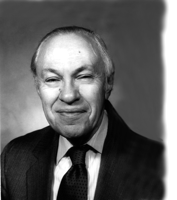
Stanley Scheindlin, DSc, RPh, holds graduate degrees in pharmaceutical chemistry and worked in drug product development and regulatory affairs. Now retired, he is a part-time consultant and writes freelance articles for pharmacy-related specialty publications.

